Valanguar
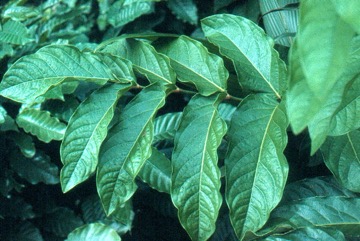
A tropical plant. It occurs in coastal areas and probably up to 1000 m altitude. It is mostly planted around houses. It occurs at Madang, Manus, New Britain and New Ireland in Papua New Guinea. Usually it is near the sea level and below 140 m altitude.
Synonyms
- Nothopanax spp.
- etc.
Edible Portion
- Leaves, Vegetable
Where does Valanguar grow?
Found in: Asia, Indonesia, Pacific, Papua New Guinea, PNG, SE Asia, Solomon Islands
Notes: There are about 100 Polyscias species.
Status: In Papua New Guinea it is moderately common as an ornamental in coastal areas, but not always eaten. It is popular in the Gazelle Peninsula.
Growing Valanguar
Cultivation: Plants are grown by cuttings. They are often used as an ornamental hedge. This plant is often used to form a hedge around their houses and gardens. Constantly picking the leaves helps maintain it as a small pruned shrub. As a shrub they grow from 2 to 5 m tall. Seeds are produced and spread by birds. These self sown seedlings are sometimes replanted.
Edible Uses: The young leaves are cooked and eaten. The young leaves have a nice smell and are used as a vegetable as well as to flavour stews.
Nutrition Info
per 100g edible portion| Edible Part | Energy (kcal) | Protein (g) | Iron (mg) | Vitamin A (ug) | Vitamin c (mg) | Zinc (mg) | % Water |
|---|---|---|---|---|---|---|---|
| - | - | - | - | - | - |
Valanguar Photos

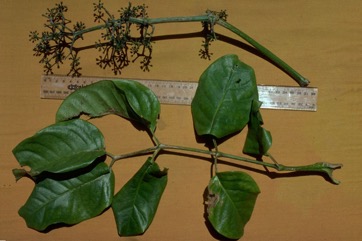
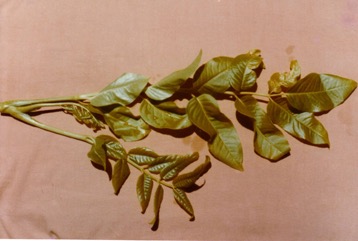
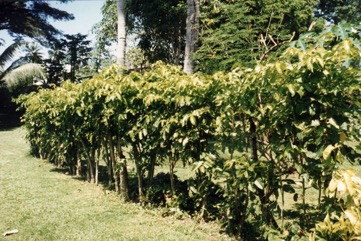
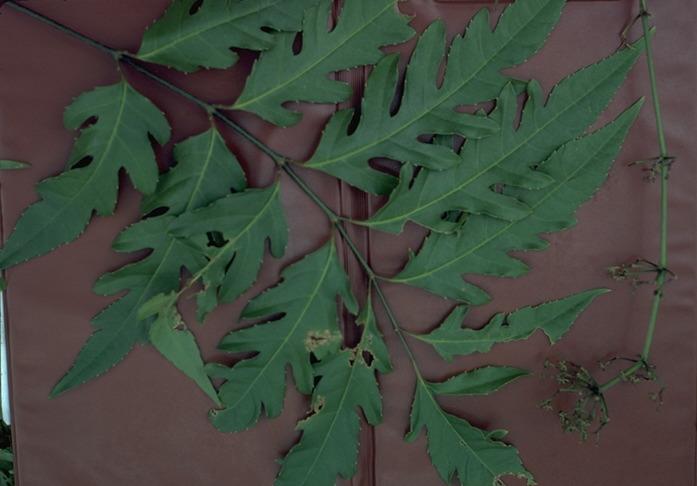
References
Valanguar references Polyscias verticillata
Bailey, L.H., 1916, Rhodora 18 153.
Barrau. J., 1958, Subsistence Agriculture in Melanesia. B. P. Bishop Museum
Borrell, O.W., 1989, An Annotated Checklist of the Flora of Kairiru Island, New Guinea. Marcellin College, Victoria Australia. p 54
Burkill, p 1589,
Conn, B.J., (Ed.) 1995, Handbooks of the Flora of Papua New Guinea. Vol 3. Melbourne University Press. p 34
Corner, Nothopanax
De Clerq, 1927, Niew Plantk. Woordenb. 2 nd ed. p160 no.2863
Engler, & Prant Die Nat. Pflan. Fam. 3.7.8
Filet, , 1888, Plantk. Woordenb. 2nd Ed. p 5 No. 76.
Fosberg, 1948, Univ. Hawaii Occ. Paper 46, 9
French, B.R., 1986, Food Plants of Papua New Guinea, A Compendium. Asia Pacific Science Foundation p 74
French, B.R., 2010, Food Plants of Solomon Islands. A Compendium. Food Plants International Inc. p 94
Harms, 1923, Polyscias pinnata Bot. Jahrb. 56:409
Heyne, 1927, Nutt. Planten 2nd Ed p1209
Holmes, 1892, Bull. Pharm 6 p111
Koorders, 1912, Exkflora von Java, 2, p717;
Koorders, Atlas Baumart. Java 4.2 fig 697
Martin, F.W., & Ruberte, R.M., 1975, Edible Leaves of the Tropics. Antillian College Press, Mayaguez, Puerto Rico.
Menaut, 1929, Bull. Econ. Indochine p246
Miquel, 1856, Flora Ind. Bt. 1(1):765
Ochse, , 1925, Tropische Groenten p 17 with a fig.
Ochse, Nothopanax fruticosum (L.)Miq.
Oomen, H.A.P.C., & Grubben, G.J.H., 1978, Tropical Leaf Vegetables in Human Nutrition, Communication 69, Department of Agricultural research, RTI Amsterdam, p 24
Parham, Plants of the Fiji Is. p129.
Peekel,
Philipson,W.R.,1979, Araliaceae, in Flora Malesiana Ser. 1 vol. 9:1 p71
PROSEA handbook Volume 13 Spices. p 279
Sharma, A.K. & Chatterji, A.K., 1964, Cytological study as an aid in the interpretation of the systematic status of the different genera of Araliaceae. Cytologia 29:1-12.
Smith, A.C. & Stone, B.C., 1968, The Araliaceae of the New Hebrides, Fiji, Samoa, and Tonga. J. Arnold. Arb. 49(4):431-493 8 pls.
Stone, B.C., 1965, Notes on Polyscias (Araliaceae) from Micronesia. Micronesica. Journ. Coll. of Guam 2(1).
Stone, B.C., 1965, Notes on the type species of Polyscias J.R.& G.Forst. (Araliaceae). Taxon 14(8): 281-285
Stone, B.C., 1966, Polyscias verticillata (Araliaceae), A New Species from the Solomon Islands. Journal of the Arnold Arboretum, Vol. 47 p270
Stone, B.C. & Loo, A.H., 1969, Cytotaxonomic notes on some species of Polyscias (Aralaceae) Journ. Jap. Bot. Vol. 44 No.11. p321-
World Checklist of Useful Plant Species 2020. Royal Botanic Gardens, Kew